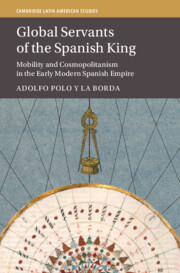Book contents
- Global Servants of the Spanish King
- Cambridge Latin American Studies
- Global Servants of the Spanish King
- Copyright page
- Dedication
- Contents
- Figures
- Maps
- Acknowledgments
- Abbreviations
- Introduction
- 1 An Empire on the Move
- 2 Imperial Networks of Patronage
- 3 An Empire of Experts
- 4 Controlling Dissent and Imposing Authority
- 5 Radical Mobility
- 6 Imperial Cosmopolitanism
- Conclusion
- Glossary
- Bibliography
- Index
- Cambridge Latin American Studies ()
- References
Bibliography
Published online by Cambridge University Press: 20 February 2025
- Global Servants of the Spanish King
- Cambridge Latin American Studies
- Global Servants of the Spanish King
- Copyright page
- Dedication
- Contents
- Figures
- Maps
- Acknowledgments
- Abbreviations
- Introduction
- 1 An Empire on the Move
- 2 Imperial Networks of Patronage
- 3 An Empire of Experts
- 4 Controlling Dissent and Imposing Authority
- 5 Radical Mobility
- 6 Imperial Cosmopolitanism
- Conclusion
- Glossary
- Bibliography
- Index
- Cambridge Latin American Studies ()
- References
- Type
- Chapter
- Information
- Global Servants of the Spanish KingMobility and Cosmopolitanism in the Early Modern Spanish Empire, pp. 299 - 334Publisher: Cambridge University PressPrint publication year: 2025

